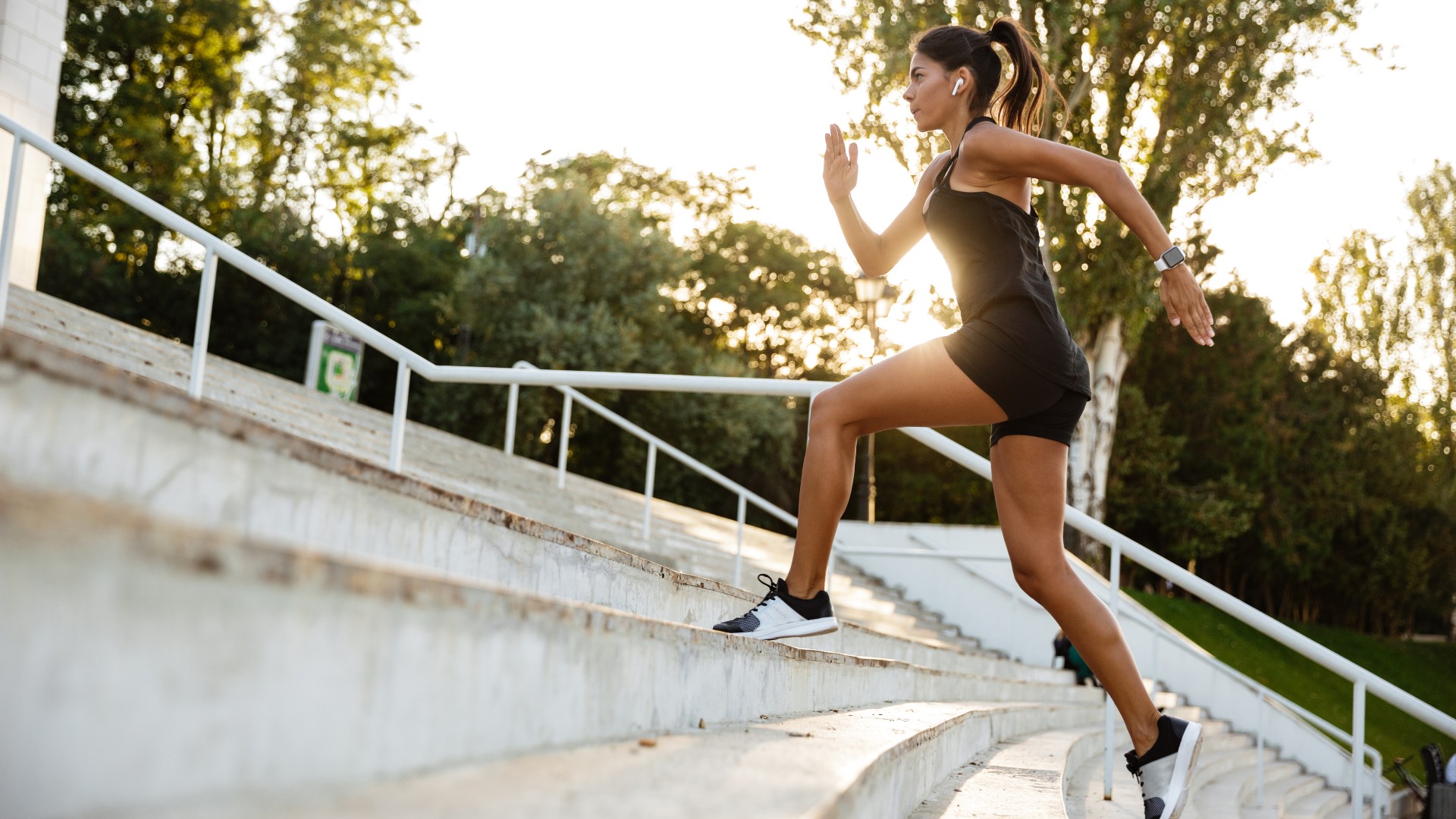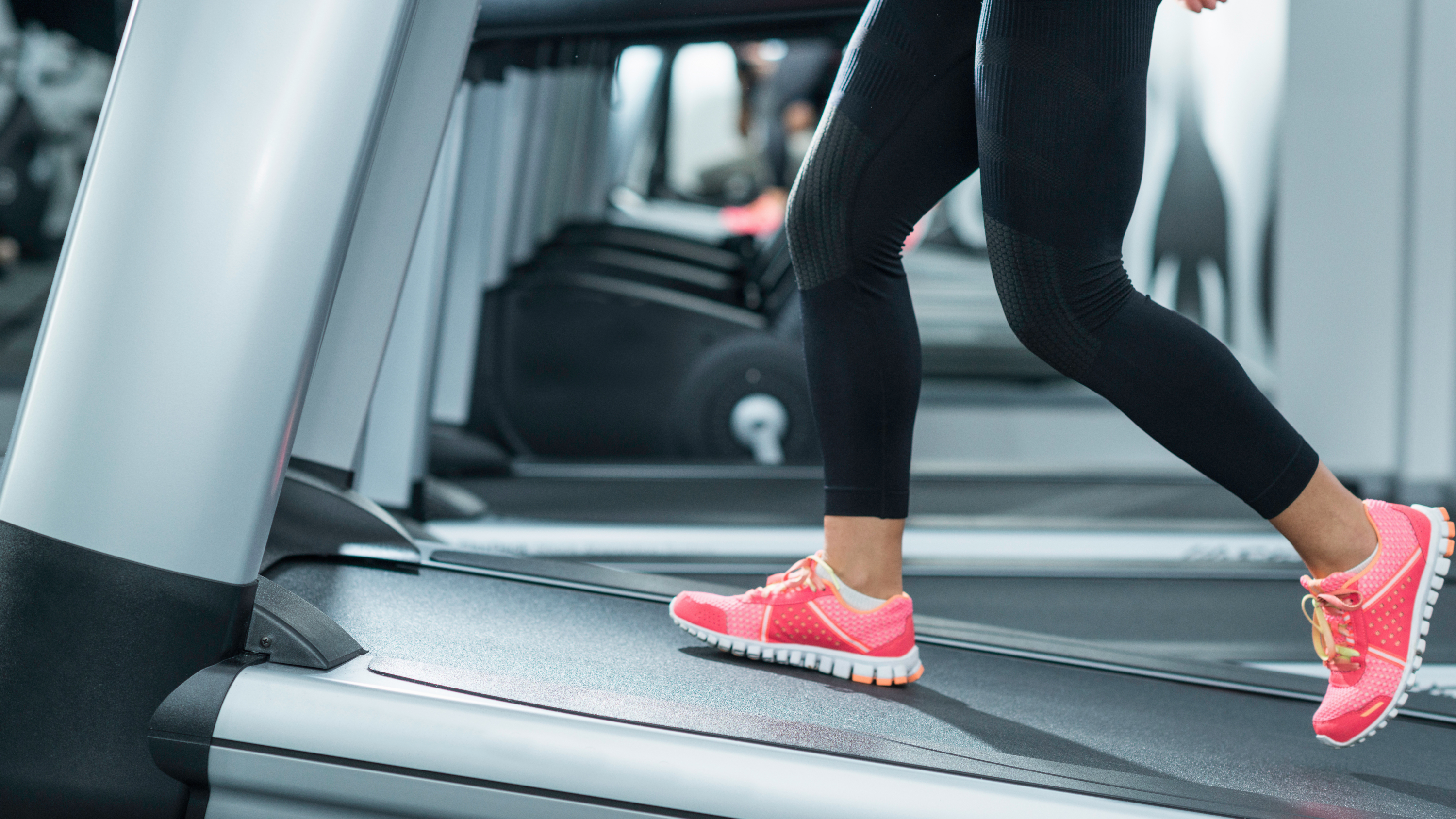
We have good news — you don’t have to enjoy walking with weights or pounding fast miles on treadmills to build lower body strength.
These short walking workouts will strengthen your cardiovascular fitness and build more resilient hips, glutes, quads, hamstrings, calves and core muscles, simply by increasing your step count and making walking more fun and challenging.
We’ve included three walking workouts for all abilities, and you won’t need the best treadmills to program some of them. You could do them in the gym, at home, or outdoors if you enjoy being out in nature.
And if you’re looking for a simple way to boost mental strength and improve mood, a review in the journal Science Advances tells us that walking in nature is a super accessible way to get the endorphins flowing and reduce feelings of anxiety.
Slinging on a pair of walking shoes and breathing in some fresh air is the perfect way to burn calories, boost your metabolism and get the blood pumping to your muscles. Here are three of our favorite bodyweight walking workouts to try.
What are the 3 walking workouts?
Anyone can do these workouts, regardless of ability. If you prefer to add a set of dumbbells or kettlebells, weighted vests, ankle weights, or wrist weights to your workout to increase the resistance on your muscles, you can, but ensure you don’t run or jog with them as this will increase the impact on your joints.
Walking workout 1: Speed play intervals

Have you ever wondered what 30 minutes of power walking can do for your body?
The mixed intensity of this workout mimics fartlek training (switching between walking, jogging and running) but with walking speeds instead. You can improve overall cardiovascular fitness and build muscular endurance by teaching your body to shift between higher and lower intensities, placing different energy demands on the body.
Power walking means walking at a faster pace than a typical walk, usually between 4-5.5 mph. If you enjoy tracking your workouts, we recommend one of the best fitness trackers to record this workout.
Time 25 minutes: Power walk intervals
- Interval 1: Power walk for 2 minutes, then rest for 1 minute
- Interval 2: Power walk for 3 minutes, walk for 1 minute, rest for 1 minute
- Interval 3: Power walk for 5 minutes, then walk for 2 minutes
- Interval 4: Power walk for 7 minutes, walk for 3 minutes
If you enjoy power walking, check out more of the best walking workouts for power walking for beginners, intermediate-level, or advanced exercisers. During the slower walks and rests, focus on long, expansive breaths to bring your heart rate down.
You should aim to keep your arms at 90 degrees and pump them back and forth, which should help you drive forward while you walk. Try to stand tall and avoid overstriking by shortening your cadence.
Walking workout 2: Quads and hamstrings EMOM

Incline walking helps emphasize the posterior chain muscles that run down the back of your body, including your lower back, glutes, hamstrings, calf muscles, plus hip flexors.
Engage your core to protect your lower back and stand tall throughout your spine. Decline walking loads the quads and front of the body harder, even without weights.
Use a staircase, treadmill, or hilly terrain for this workout. Try to find a challenging incline and have some weights on hand to hold for the farmer’s walk — this could include a rucksack, filled water bottles, kettlebells, dumbbells, or even groceries.
Set up your space so you can switch efficiently between exercises without rushing.
Time: 25 minutes
EMOM (every minute on the minute) x 8 rounds
- Minute 1: Incline walk
- Minute 2: Farmer’s walk decline
- Minute 3: Incline walking lunges
Start by walking at a fast pace on an incline for 50 seconds or until you reach the top of the hill or staircase (whichever happens soonest), then use the remaining 10 seconds to rest.
On the second minute, pick up your weights and walk downhill. On the third minute, repeat walking uphill with walking lunges (you can choose whether or not you drop the weights here).
Keep your glutes engaged, and avoid striking with your heels. Adapt the workout as necessary to your settings. Check out this 3-move walking workout to learn a similar workout using this set-up and style.
Walking workout 3: Pyramid inclines

This 15-minute workout is best performed using a treadmill for ease. Work based on a rate of perceived exertion out of 10 (RPE), with 10 being your hardest effort and 1 your easiest. That might mean you scrap the numbers below (remember, they're just guidelines) and aim to work solely with RPE, or a mix of both.
Time: 15 minutes
- 2 minutes: Walk on a flat road at 2mph (easy effort)
- At 2 minutes: increase the speed to your fastest possible walking pace and maintain for 1 minute
- At 3 minutes: decrease your speed by 0.5-1 mph and add 2% to your incline
- Every minute on the minute: add 2% to your incline and decrease the speed by 0.5-1mph
- At 7 minutes, you should be reaching a 10% incline at around 2.5mph walking pace
- Begin reversing the numbers so that you add 0.5-1 mph of speed every minute and decrease the incline by 2%
- Finish with a 2-minute brisk walk.
Benefits of walking workouts
Remember to warm up gently before each walking workout, moving the relevant muscle groups through a range of motion and delivering fresh oxygen and blood flow to your muscles.
Whether you’re walking for weight loss or to strengthen the bones and muscles in your lower body, walking for just 30 minutes a day could help with both, also helping you burn more calories and increase your metabolism, contributing toward healthy fat loss in combination with regular exercise and a balanced diet.
Most importantly, remember that while walking can be challenging, it should also be enjoyable and help relieve some of the tension from your day. If you enjoy walking with music or your favorite podcast, it's a great way to boost your mood.







